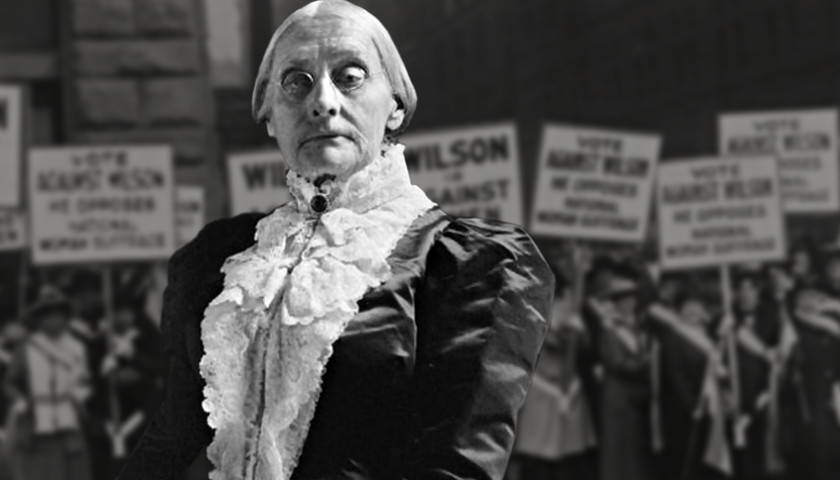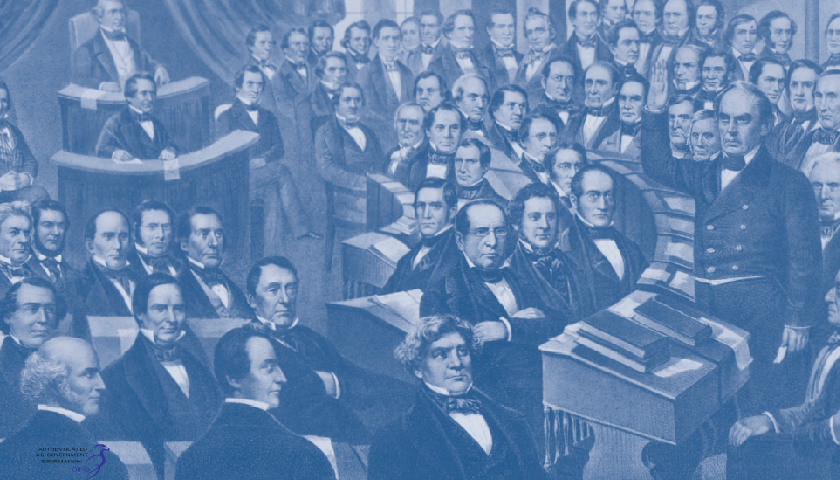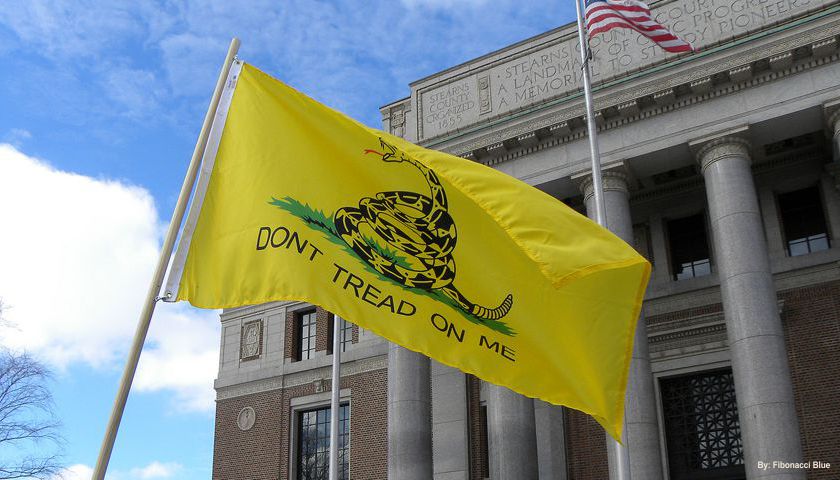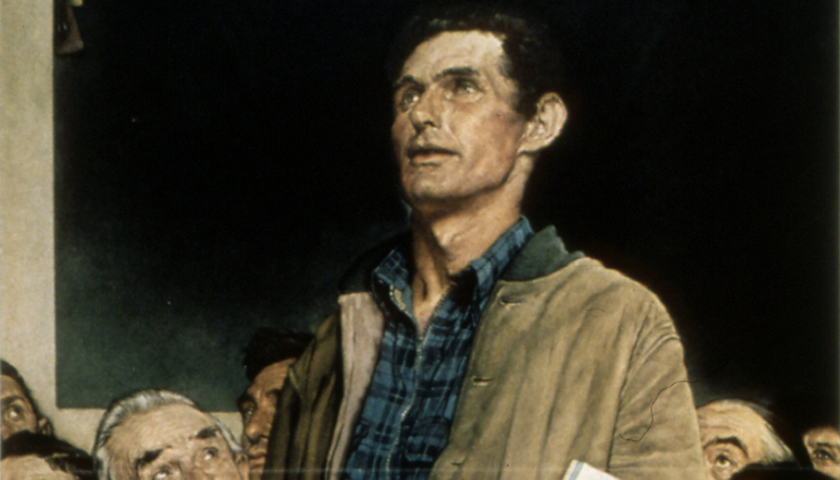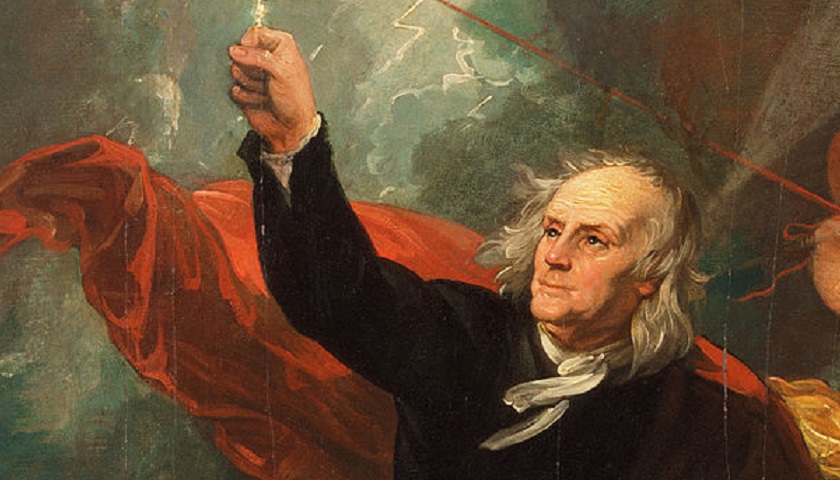This is the twenty-second of twenty-five weekly articles in The Tennessee Star’s Constitution Series. Students in grades 8 through 12 can sign up here to participate in The Tennessee Star’s Constitution Bee, which will be held on Saturday, April 28. The Nineteenth Amendment was finally ratified and victoriously added to the United States Constitution on August 26, 1920 after nearly one hundred years of painstaking trials, tumult, and disappointment. Twenty-six million women were enfranchised! It states: The right of citizens of the United States to vote shall not be denied or abridged by the United States or by any State on account of sex. Congress shall have power to enforce this article by appropriate legislation. To understand the long road to political equality for the American woman, we must understand the history and events that transpired during those years. HISTORY The U. S. Constitution of 1787 was a gender-neutral document. The original Constitution referred to “persons,” not male persons, and used the pronoun “he” only in the generic sense. Not until the addition of the Fourteenth Amendment in 1868 did the Constitution include the word “male.” In fact, nothing in the original document prevented women from voting. Our founders left it to the discretion…
Read the full storyAuthor: Claudia Henneberry
Constitution Series: The Seventeenth Amendment and the Direct Election of United States Senators
This is the twentieth of twenty-five weekly articles in The Tennessee Star’s Constitution Series. Students in grades 8 through 12 can sign up here to participate in The Tennessee Star’s Constitution Bee, which will be held on September 23 from 9 a.m. to noon at Sycamore High School, 1021 Old Clarksville Pike, Pleasant View, Tennessee. Federalism and The Separation of Powers are the two foundational concepts framed in the United States Constitution which, together, were designed to protect the liberties and natural rights of individual citizens. Federalism refers to the division of powers between a national government and individual state governments, while The Separation of Powers refers to the three branches of government – legislative, judicial, and executive – whose competing powers provide checks and balances on the threat of tyranny. The legislative branch, is in itself divided into two separate legislative bodies, the House of Representatives and the Senate, each with its own unique powers. The Founding Fathers masterfully added yet another layer for safeguarding liberty through the method by which the members of the two legislative bodies would be elected. At the Constitutional Convention in 1787, the Framers decided that the members of the House of Representatives would be elected directly by the people (Direct Election) and…
Read the full storyConstitution Series: The Ninth Amendment
This is the sixteenth of twenty-five weekly articles in The Tennessee Star’s Constitution Series. Students in grades 8 through 12 can sign up here to participate in The Tennessee Star’s Constitution Bee, which will be held on September 23. The Constitution was written for one particular purpose–to limit the powers of the general, or, national, government, therein securing the blessings of liberty by protecting the individual’s natural rights. It is simply outlined in the Preamble, drafted brilliantly by Gouverneur Morris, a native New Yorker who represented Pennsylvania at the Constitutional Convention, and made clear the primary purpose for the Constitution and that the people are the ones for whom and by whom it was created beginning with the revolutionary words, We the People. During the consideration of the Bill of Rights, the concern by the founders was that if they specified certain rights of the people to be guarded by the national government, what if they neglected others? How could they be sure that all the people’s God-given rights would be protected? Among others, this was a major concern for James Wilson, a Pennsylvania Congressman who would later serve on the first Supreme Court. Supporters of the Constitution, or Federalists, such as James Wilson and…
Read the full storyConstitution Series: The First Amendment
This is the sixth of twenty-five weekly articles in The Tennessee Star’s Constitution Series. Students in grades 8 through 12 can sign up here to participate in The Tennessee Star’s Constitution Bee, which will be held on September 23. The First Amendment was passed by Congress September 25, 1789, and ratified December 15, 1791 along with the nine other amendments that comprise The Bill of Rights. It reads: Congress shall make no law respecting an establishment of religion, or prohibiting the free exercise thereof; or abridging the freedom of speech, or of the press; or the right of the people peaceably to assemble, and to petition the Government for a redress of grievances. The First Amendment combines five specific rights into one fundamental law guaranteeing freedom of expression: (1) Freedom of Religion (2) Freedom of Speech (3) Freedom of the Press (4) Right to Peaceably Assemble (5) Right to Petition “The first amendment is the most important in the American Constitution because it protects the things that make us what we are, including talking, and writing, and worshiping,” Dr. Larry Arnn, professor of politics and history and president of Hillsdale College, wrote recently. The Founding Fathers knew that these unalienable rights already belonged to the…
Read the full storyConstitution Series: A Republic, If You Can Keep It
This is the first of twenty-five weekly articles in The Tennessee Star’s Constitution Series. Students in grades 8 through 12 can sign up here to participate in The Tennessee Star’s Constitution Bee, which will be held on September 23. Minutes after the Constitutional Convention adjourned in Philadelphia on September 17, 1787, Elizabeth Powel, a friend of George Washington who hosted many social events for the political class of the time, asked Benjamin Franklin if the convention had given us a republic or a monarchy. “A republic, madam, if you can keep it,” the venerable 81-year-old delegate, ambassador, and inventor responded. Fifty-five delegates, from all the states except Rhode Island, attended that convention, which began four months earlier in May of that year under the premise of forming a more perfect union by revising the Articles of Confederation. You see, the United States of America was not officially formed as the republic of which we are currently citizens in 1783 when the Treaty of Paris, in which Great Britain acknowledged the independence and sovereignty of its former colonies, was signed. The Continental Congress of the thirteen rebellious colonies, convening in York Town, Pennsylvania (now simply called York), adopted the…
Read the full story
